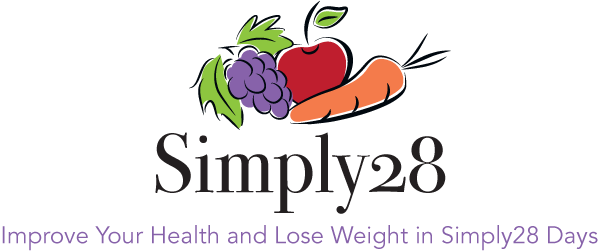In today’s world, there seems to be a lot of confusion about what is considered “real” food and occasionally some controversy over it too. Some people take offense to the term “real” food because they feel that by stating that if food that is unprocessed and as close to its original source as found in nature is “real” then other convenience foods that come in a package or box are “fake” foods. I refer to real food in much of my content whether that be social media posts, blog posts, emails or even my recently released book, “The Simply28 Real Food Cookbook”. This is never meant to be offensive in any way but to simply refer to food that supports our health.
With the rise of chronic illness, expensive medical bills and people wanting to take better care of their health, many people are left wondering what they should be eating to maintain a healthy and balanced diet. My mission in life is to help people learn how achieve their goals and live their healthiest lives. I know that by eating food as close to its original source as it was grown in nature is the best thing you can do to promote good health. So, let’s take a look at what is meant by the term real food and the health benefits that it provides.
At its core, real food is food that is minimally processed and as close to its natural state as possible. Real food consists of whole foods like fruits, vegetables, nuts, seeds, meat, fish and poultry. These foods are rich in nutrients and fiber, which are essential for maintaining optimal health. Some of the health benefits of eating real food include:
Better digestion: Real foods are often easier for our bodies to digest compared to highly processed foods. This is because real foods are usually rich in fiber, which helps to keep our digestive system running smoothly. When we eat too many processed foods, we may experience digestive issues like bloating, constipation, and diarrhea.
Improved energy levels: Real foods are often rich in complex carbohydrates and healthy fat which provide our bodies with sustained energy throughout the day. In contrast, processed foods are often high in simple sugars, which can cause our blood sugar levels to spike and then crash, leaving us feeling tired and lethargic.
Stronger immune system: Real foods are rich in vitamins, minerals, and antioxidants, which help to strengthen our immune system and protect us from illness. On the other hand, processed foods are often low in nutrients and can actually weaken our immune system when consumed regularly.
Better mental health: Studies have shown that eating a diet rich in fruits, vegetables, high quality proteins and healthy fat is associated with better mental health outcomes. In contrast, a diet high in processed foods has been linked to an increased risk of depression, mood swings, and anxiety.
Weight management: Real foods are often less calorie-dense than processed foods, which means you can eat more of them without consuming too many calories. Additionally, real foods are often more filling and satisfying, which can help to reduce cravings and prevent overeating.
On the other hand, highly processed and packaged foods are often loaded with added sugars, salt, and unhealthy fats. These foods are often stripped of their nutrients and fiber during the processing, leaving behind empty calories that can contribute to weight gain, inflammation, and other health issues.
So, how do you know if something is real food or not? One of the best ways to determine if a food is real is to read the ingredients label. If there are a lot of ingredients that you can’t pronounce or don’t recognize, it’s likely that the food is highly processed.
Another good rule of thumb is to shop the perimeter of the grocery store. This is where you’ll find the fresh produce, meats, and dairy products. The inner aisles of the store are often filled with highly processed and packaged foods.
In addition to being more nutritious, real food is often more environmentally friendly than highly processed foods. Whole foods are often grown locally and sustainably, which reduces the carbon footprint of your diet.
In conclusion, real food is food that is minimally processed and as close to its natural state as possible. By choosing real food over highly processed and packaged foods, you can improve your health. So, the next time you’re at the grocery store, remember to read the ingredients label and shop the perimeter for the best, most nutritious food options.





